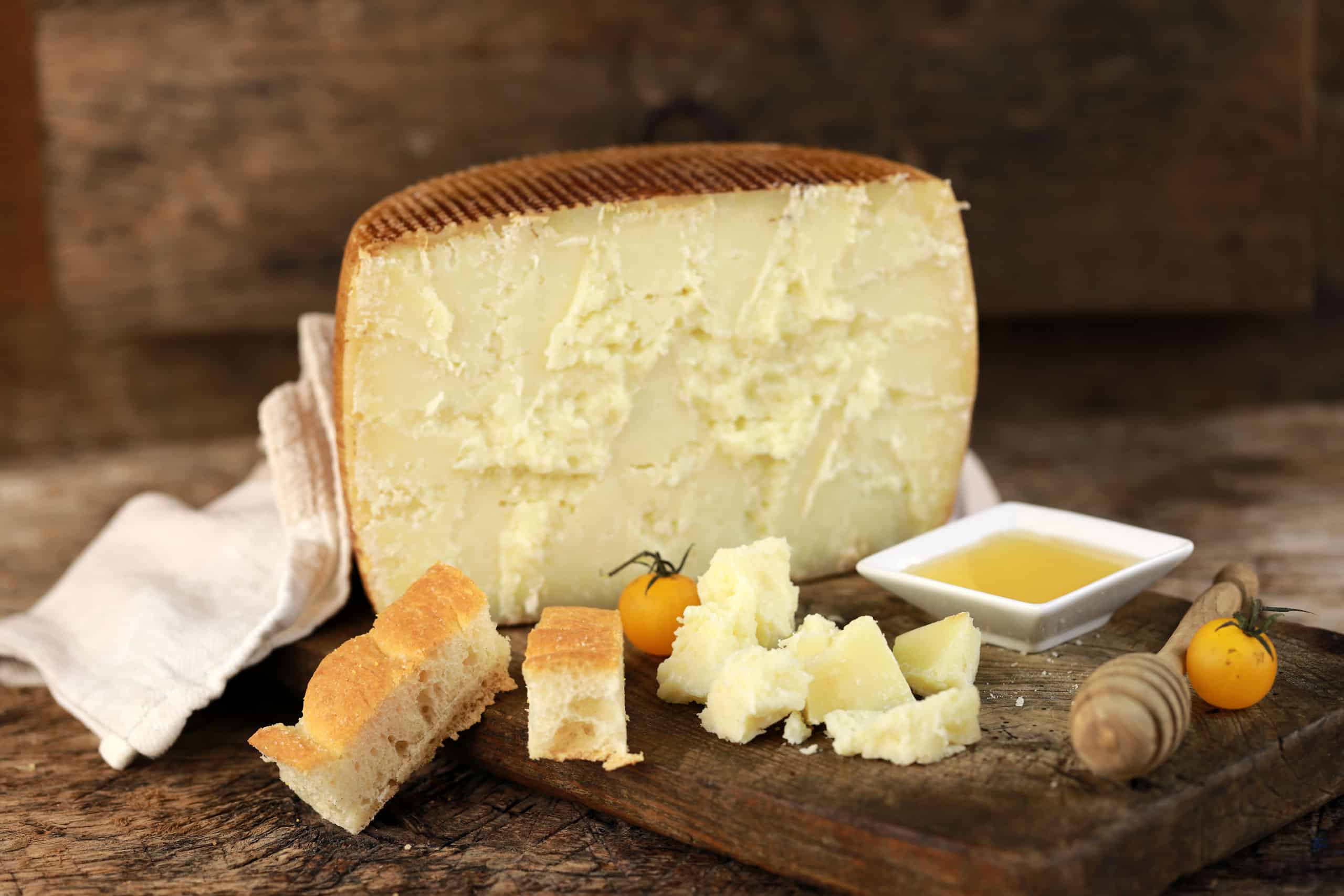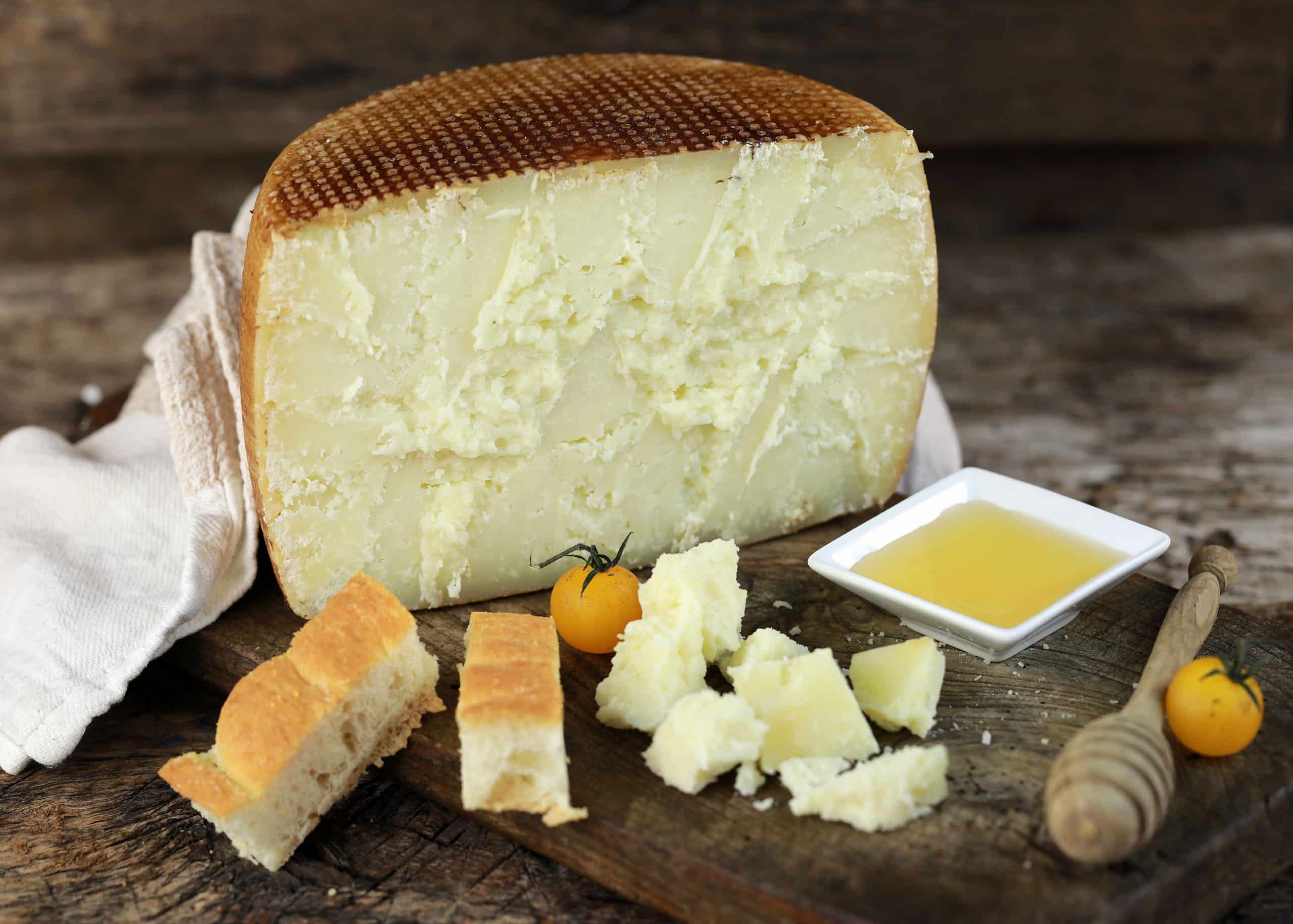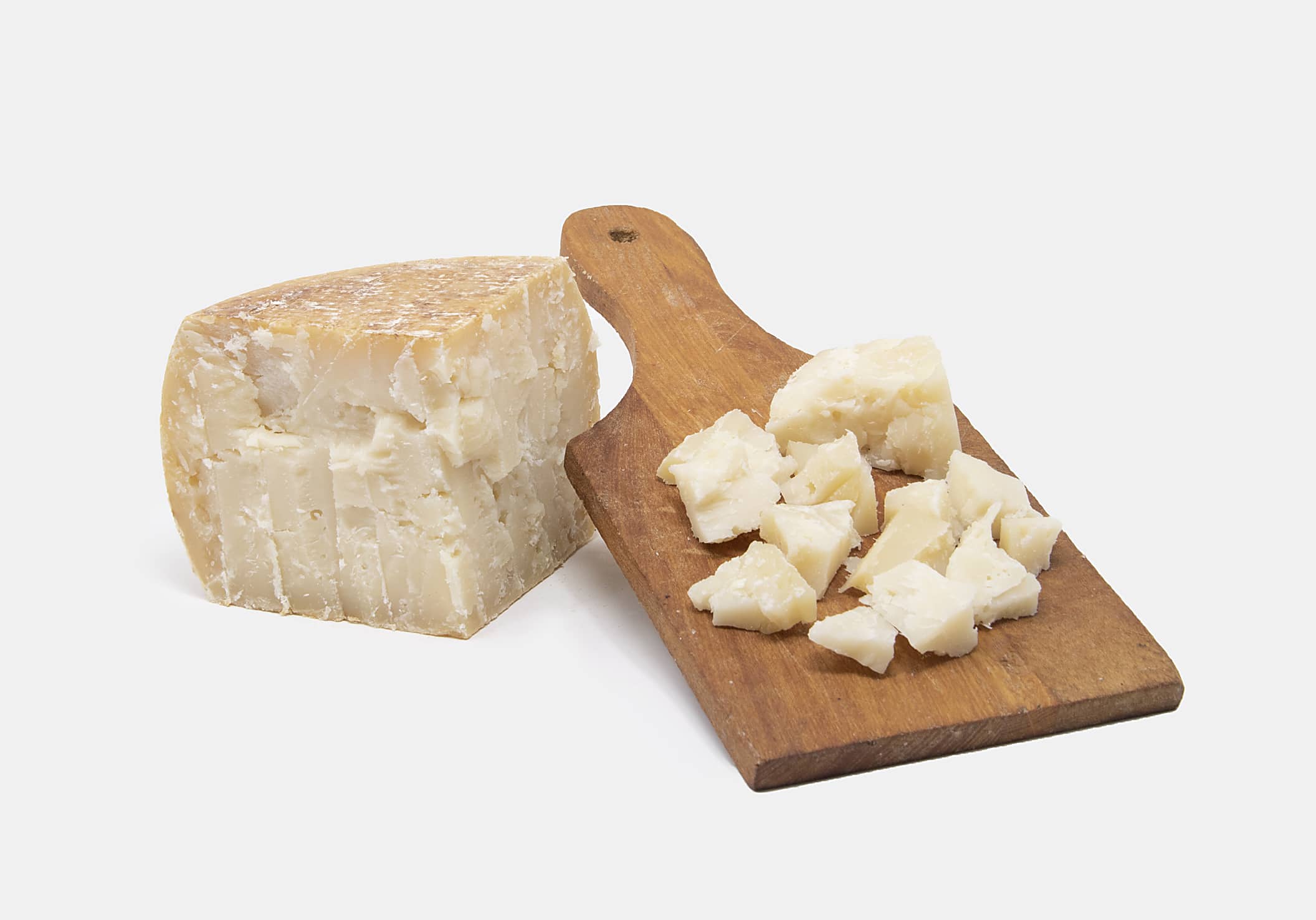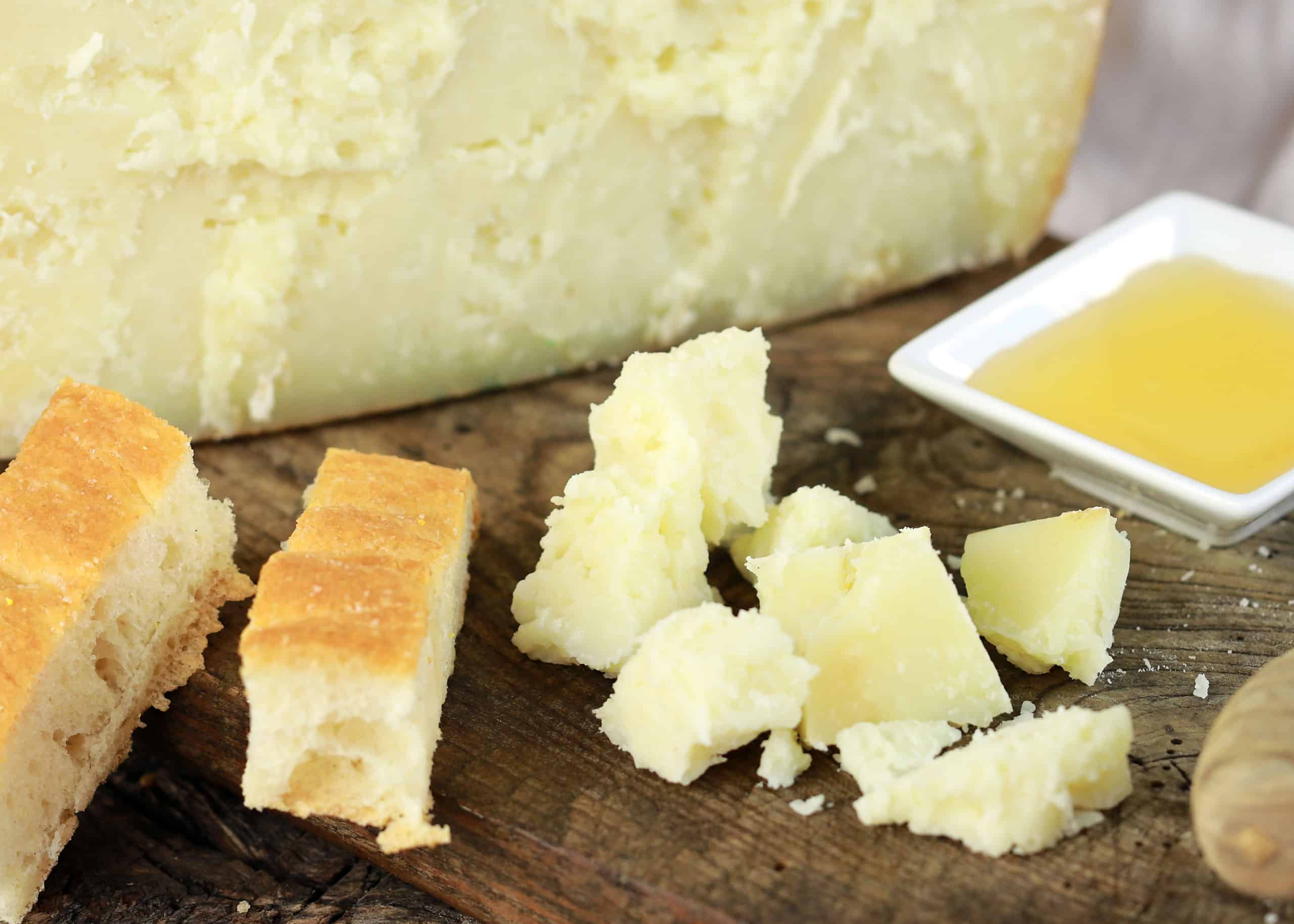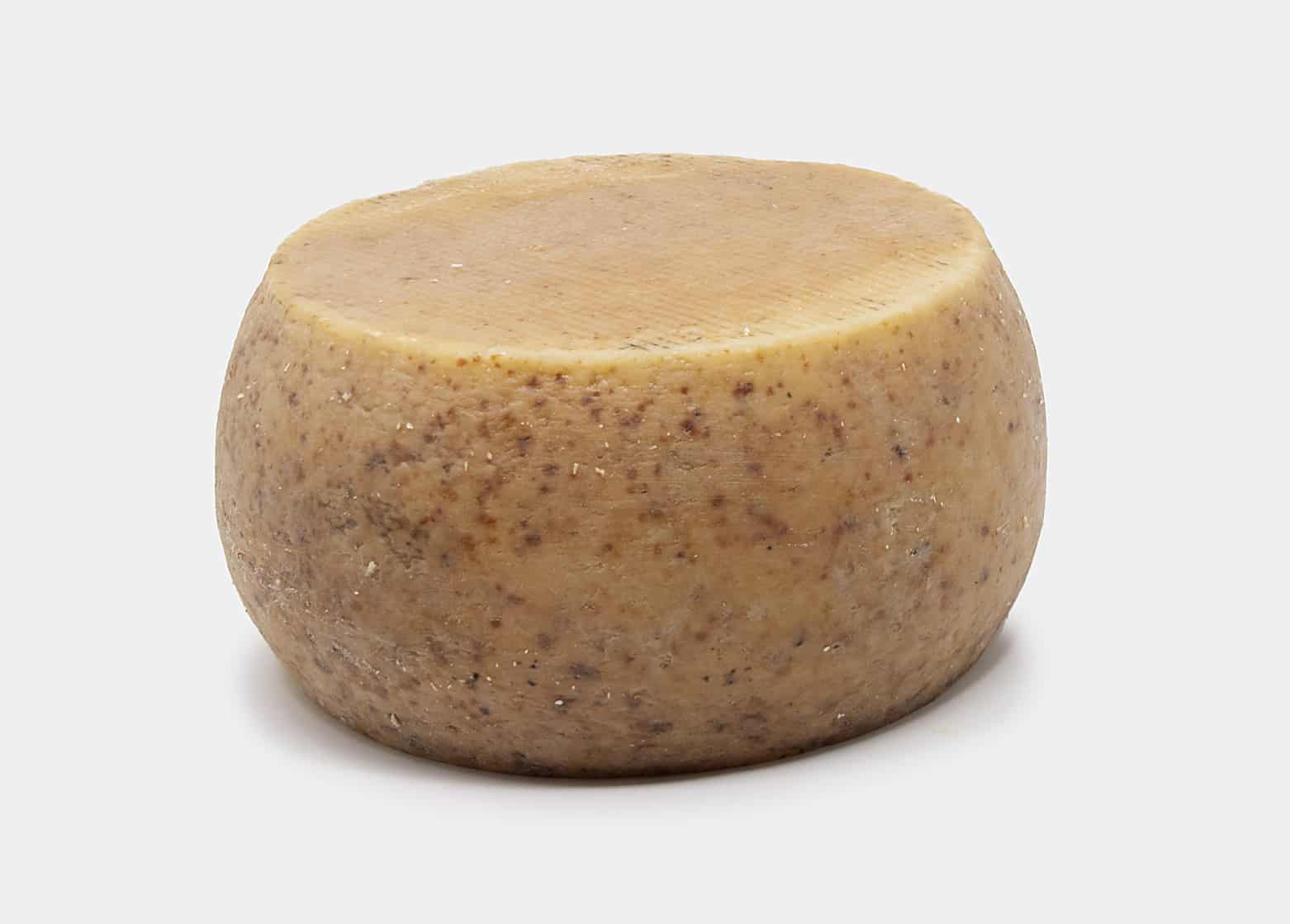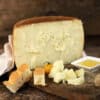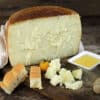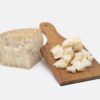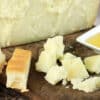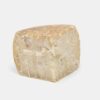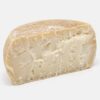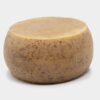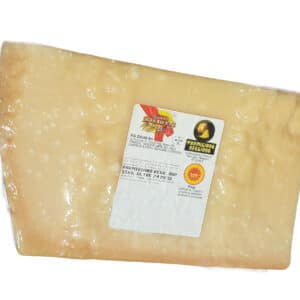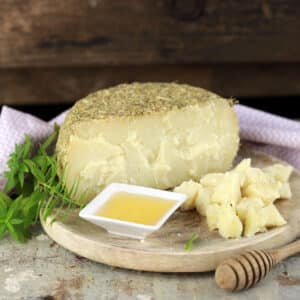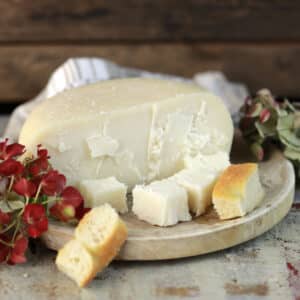Semi-Seasoned Pecorino is made only in the coldest months of the year, from February to April, using only pasteurized sheep’s milk, with the sole addition of rennet, salt, lactic ferments and lysozyme, an enzyme that acts as a preservative and prevents proliferation. bacterial.
Aged for no less than four months, it has a medium-compact, light-colored, almost white-colored, eyeleted paste.
With a sweet and fragrant taste, it is an excellent table cheese, but it can be eaten at any time of the day, alone or with honey. Perfect with Chestnut Honey whose bitter aftertaste goes well with the sweetness of cheese or with jams, such as the one with berries characterized by sour notes that help to enhance its sweet flavor.
In addition, given its long maturation, it is also suitable for grated over pasta, in the fillings of crepes and cannelloni or in the stuffing of savory vegetable pies.
Processing
The manufacturing process of this pecorino is divided into four distinct phases.
The first phase foresees that the sheep’s milk is subjected to pasteurization and then inoculated with the lactic ferments and subsequently coagulated with calf rennet at a temperature between 35 and 39 degrees centigrade.
The second phase is that of breaking the curd: that is, the paste is “split” until the curdled granules have reached the desired size. At this point the curd is subjected to a sort of semi-cooking not exceeding 43 degrees and then divided into the appropriate circular shapes. The cheese is then subjected to stewing and pressing in order to guarantee the right acidification and optimal purging.
The third phase of the manufacturing process is that of salting. Once the purging is done, the cheese is then salted.
The fourth and final phase is that of seasoning. The forms of pecorino are left to mature in special locations where humidity and temperature are constantly controlled.
History
The production of pecorino cheese in Sardinia has an ancient history that goes back in time to the Bronze Age and the Nuraghic population, a population that found its main source of livelihood in sheep farming rather than agriculture.
At the time of the Carthaginians and during the rule of Rome, the whole island became one of the main wheat production centers in the entire Mediterranean basin.
However, thanks to the favorable environmental and climatic conditions, in addition to the cultivation of the cereal par excellence, grazing and therefore the breeding of sheep developed further.
To find the first historical evidence of pecorino, however, we must wait until the end of the eighteenth century. In these writings we speak of cheeses called the Bianchi, the Smoked, the Rossini Fini, the Spiatau and the Fresa. Among these, the legitimate ancestors of Pecorino Sardo as we know it today can be considered the Rossi Fini and the Smoked which were obtained from raw milk or from milk heated through red-hot stones that were immersed in it.
Obviously, with the passage of time, the production techniques have improved and between the late 1800s and early 1900s the use of the thermometer, the milk filtration procedure and the use of titrated liquid rennet were introduced. . From the 1960s onwards, lactic ferments were also used.
Ingredients
Pasteurized sheep’s MILK, salt, rennet, lactic ferments.
Preservative on the crust E235.
Keep in a cold and dry place.
Produced and packaged in the ITA 20-129 CE factory.

